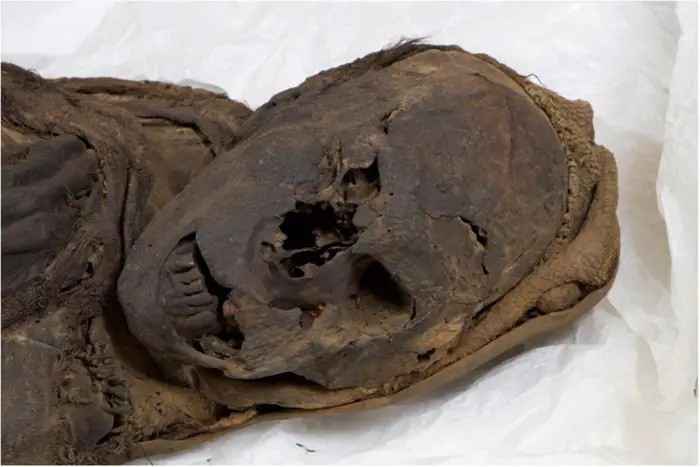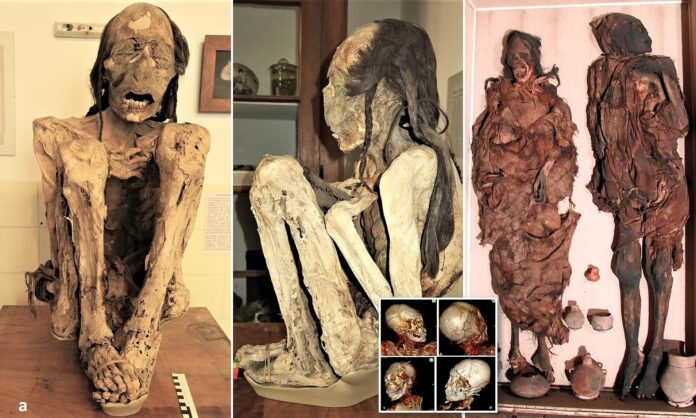In a groundbreaking study, scientists have meticulously analyzed the mummified remains of two South American men, shedding light on their brutal murders that occurred over 1,000 years ago. Through advanced 3D computed tomography (3D CT) scans, researchers have determined that one of the men suffered a fatal blow to the head followed by a stabbing, while the other had a dislocated spine. These findings provide valuable insights into the prevalence of violence in prehistoric human societies and underscore the significance of studying soft tissue preserved through mummification.
Solving an Ancient Cold Case

Using state-of-the-art 3D CT technology, researchers from Munich Clinic Bogenhausen conducted an in-depth examination of three mummies—two males and one female—from the regions that are now Chile and Peru. The male mummy, housed at the Museum Anatomicum in Marburg, Germany, belonged to the Arica culture, indicating his connection to a fishing community in modern-day northern Chile. The female and male mummies, located at the Art and History Museum of Delémont in Switzerland, were likely from the Arequipa region in southwestern Peru.

Marburg Mummy: A Young Man’s Violent End
The Marburg mummy, estimated to be a young man aged between 20 and 25, was buried in a squatting position. His skeletal features and well-preserved teeth suggested a diet rich in maize, a staple food of pre-Columbian civilizations. While evidence of severe tuberculosis scars was found in his lungs, it was the result of extreme intentional violence that caused his demise. The 3D-CT analysis revealed that the young man suffered a forceful blow to the head, followed by a stabbing in the back while still standing or kneeling. Radiocarbon dating placed the assailant’s ambush between 996 and 1147 CE.

Uncovering Clues from the Delémont Mummies: A Tale of Intentional Violence
The Delémont mummies, buried lying face up—a departure from the customary burial practices in the South American highlands—wore textiles woven from cotton and animal hairs. Based on ceramic grave goods, it is believed they originated from the Arequipa region. Radiocarbon dating indicated that the man died between 902 and 994 CE, while the woman passed away between 1224 and 1282 CE. The man’s aorta and large arteries showed signs of calcifying arteriosclerosis, but his cause of death was attributed to severe trauma to the cervical spine, likely inflicted intentionally. The woman, however, exhibited skeletal damage postmortem, suggesting she died of natural causes.
A Window into Prehistoric Violence
Dr. Andreas G Nerlich, corresponding author of the study, emphasized the importance of studying mummified soft tissue for a comprehensive understanding of past civilizations. The utilization of modern CT scans with 3D reconstructions allowed for the detection of diagnostic key features that would have otherwise gone unnoticed. The study revealed a higher incidence of trauma, particularly intentional violence, than studies solely based on skeletal remains. Dr. Nerlich expressed the potential for similar investigations on other South American mummies and their untold stories.

Through the meticulous examination of mummified remains using cutting-edge technology, scientists have successfully solved an ancient cold case, unraveling the brutal murders of two South American men over 1,000 years ago. The findings shed light on the prevalence of violence in prehistoric human societies and highlight the significance of studying soft tissue preserved through mummification. With each new discovery, the secrets of our ancestors are unveiled, offering glimpses into the mysteries of the past and enriching our understanding of human history.
